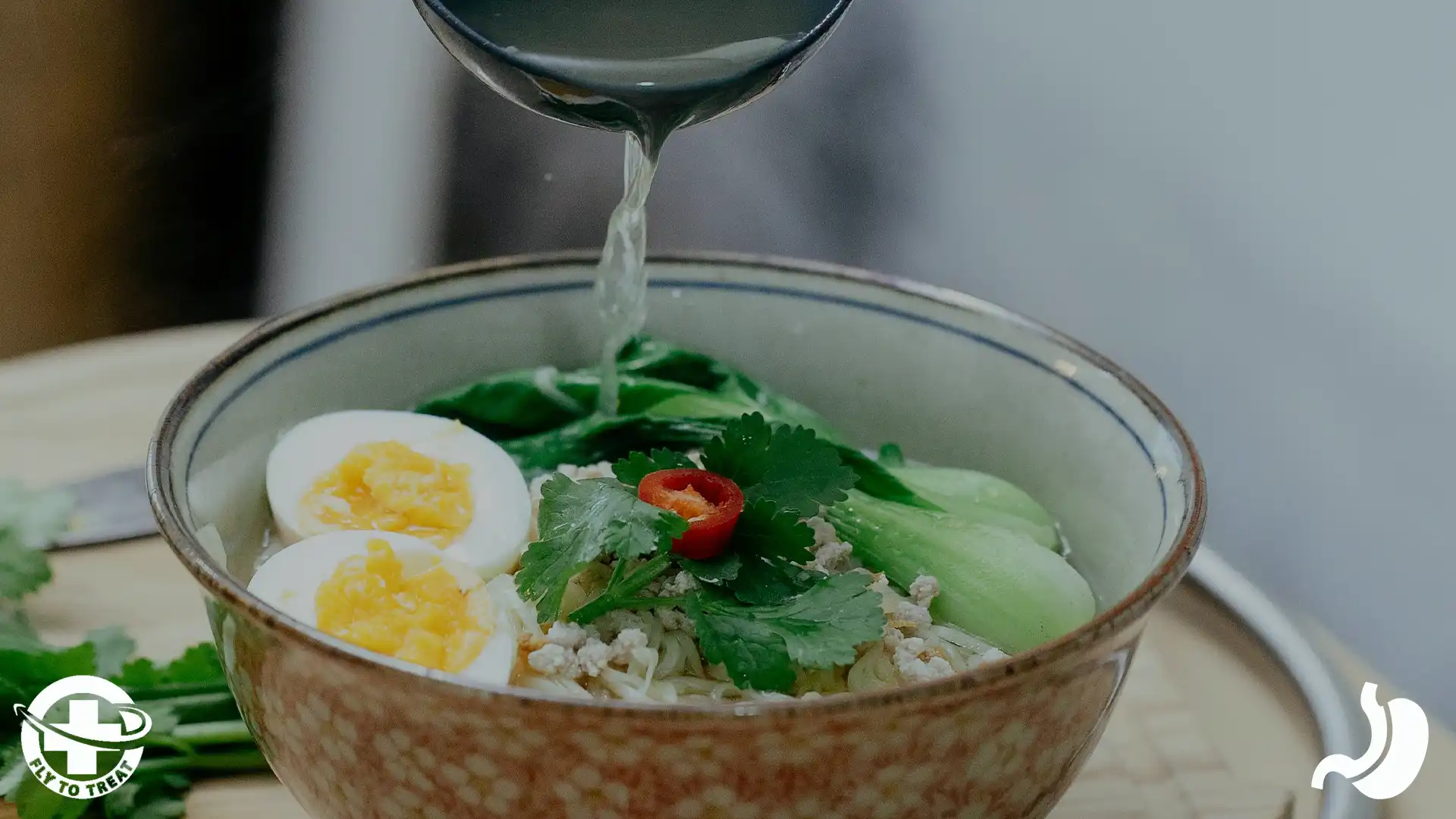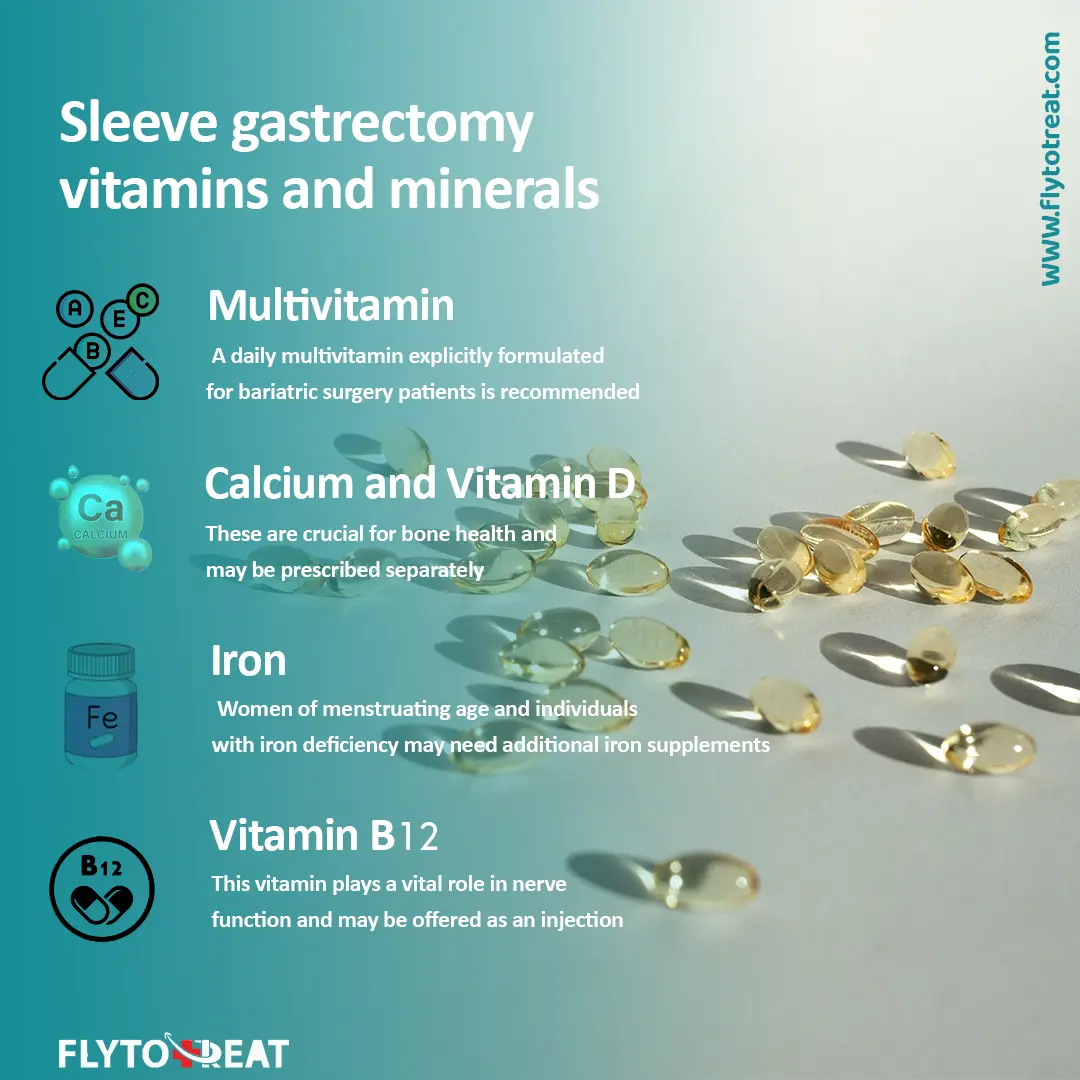
Embarking on a New You: The Essential Guide to Gastric Sleeve Diet Success
Embarking on the gastric sleeve diet begins a transformative path toward health and well-being for individuals undergoing sleeve gastrectomy. This comprehensive guide, developed with the expertise of FlyToTreat, aims to navigate patients through the dietary changes and nutritional strategies essential for a successful recovery and long-term health maintenance post-surgery. Starting with a pre-operative diet to prepare the body for surgery, progressing through the bariatric stage diet from clear liquids to regular foods, and understanding the critical role of vitamins and minerals, this document serves as a beacon for those seeking to adapt their eating habits and lifestyle in alignment with their health goals. FlyToTreat, with its commitment to excellence in medical tourism and patient care, underscores the importance of a tailored nutritional approach, ensuring each patient's journey towards recovery is well-supported, informed, and geared towards optimal outcomes.
Pre-op gastric sleeve surgery diet
The road to a sleeve gastrectomy diet often begins with a pre-operative diet. This aims to shrink your liver and improve surgical visibility. Here's what to expect:
• Reduced Calories: Your doctor will likely recommend a low-calorie bariatric diet, typically starting two weeks before surgery.
• Focus on Liquids: In the days before surgery, you might transition to a clear liquid diet consisting of broth, water, and sugar-free drinks.
• Nutritional Support: Your doctor may recommend vitamin and mineral supplements to ensure your body has the nutrients it needs.
Following this pre-operative plan is crucial to optimize your health and ensure a smooth surgery for a successful sleeve gastrectomy diet.
Diet after the sleeve surgery
Following the gastric sleeve diet (aka ESG or VSG diet) requires a significant shift in your eating habits. Here's a glimpse into what you can expect on your gastric sleeve diet:
• Start Slow: The initial focus is on clear liquids, progressing to soft, pureed foods as your body heals.
• Small Meals, Big Impact: Multiple small meals and snacks throughout the day are essential to avoid discomfort and ensure proper nutrient intake.
• Prioritize Protein: Protein-rich foods like lean meats, fish, and eggs become your best friends, promoting satiety and muscle maintenance.
• Hydration is Key: To prevent dehydration, drinking plenty of water is essential throughout your gastric sleeve diet.
Remember: This is a general guideline. A registered dietitian can create a personalized plan considering your preferences and nutritional needs for optimal long-term success on your gastric sleeve diet.
sleeve gastrectomy vitamins and minerals
After gastric sleeve surgery, taking particular vitamins and minerals for the rest of one's life is often necessary as supplements. Here's why:
• Reduced Absorption: The surgery limits the amount of food your stomach can hold, impacting nutrient absorption.
• Increased Needs: Your body may require higher levels of specific vitamins and minerals to support overall health.
Common Supplements:
• Multivitamin: A daily multivitamin explicitly formulated for bariatric surgery patients is usually recommended.
• Calcium and Vitamin D: These are crucial for bone health and may be prescribed separately.
• Iron: Women of menstruating age and individuals with iron deficiency may need additional iron supplements.
• Vitamin B12: This vitamin plays a vital role in nerve function and may be offered as an injection.
Regular Blood Testing:
Your doctor will likely recommend regular blood tests to monitor your vitamin and mineral levels, ensuring you're getting what your body needs throughout your gastric sleeve diet (or ESG / VSG diet).

Gastric sleeve meal size
Portion sizes become a crucial focus of the sleeve gastrectomy diet. Here's a quick guide:
• Early Recovery: Expect small portions, like ¼ cup, in the initial weeks.
• Gradual Increase: As your body heals, portions can slowly increase to ½ cup or up to 1 cup per meal within 6-12 months on your gastric sleeve diet.
• Focus on Quality: Remember, it's not just about quantity. To maximize your well-being, prioritize nutrient-rich foods from the bariatric diet.
Listen to Your Body:
While these are general guidelines, pay attention to your body's signals. Stop eating when you feel comfortably full, not stuffed. Consulting a registered dietitian can help create a personalized meal plan for optimal results on your sleeve gastrectomy diet.
Gastric sleeve staged diet (bariatric staged diet)
The gastric sleeve diet is a staged approach to reintroducing food after surgery. Here's a breakdown of the typical phases:
• Stage 1: Clear Liquids (Days 1-3): Focus on water, broth, and sugar-free drinks to promote healing and hydration.
• Stage 2 (A): Full Liquids (Days 4-7): Gradually incorporate low-fat milk, protein shakes, and clear broths to introduce more nutrients.
• Stage 2 (B): Pureed Foods (Weeks 1-2): Transition to smooth, blended foods like mashed potatoes, yogurt, and cooked shredded vegetables and meats.
• Stage 3: Soft Foods (Weeks 3-8): Introduce soft, easy-to-chew options like scrambled eggs, cooked fish, and well-cooked vegetables.
• Stage 4: Regular Diet (Week 8+): Gradually return to a healthy, balanced diet with smaller, more frequent meals, prioritizing protein and whole foods.
Remember: This is a general guideline, and the timeline may vary depending on your progress in bariatric staged diet. Following your doctor's instructions and consulting a dietitian are crucial for a smooth and successful gastric sleeve diet.
Sample Meal Plan for Gastric Sleeve Patients
A sleeve gastrectomy diet often requires personalized meal planning. Sample plans can provide a helpful starting point.
The following photo offers a post-bariatric surgery meal plan tailored to different stages of the gastric sleeve diet. It considers factors like portion sizes, nutrient content, and food consistency for a smooth transition.
Remember: This is just an example. Consulting a registered dietitian can create a plan that meets your needs and preferences, ensuring optimal success on your gastric sleeve diet.
The Gastric Sleeve Pouch Reset
The gastric sleeve diet is a powerful tool, but weight regain can sometimes occur. Here's where the gastric sleeve pouch reset comes in.
Why Reset?
Despite surgery, some people may experience:
• Limited weight loss initially
• Weight regain over time
This can be due to the stomach pouch stretching from unhealthy eating habits, which impacts fullness cues. A pouch reset aims to shrink the pouch to its size right after surgery.
How Does It Work?
The pouch reset involves following a strict diet similar to your one after surgery (bariatric diet). This reduces stomach pressure and potentially shrinks its size. It's crucial to consult your doctor and dietician before attempting a pouch reset. While the exact return to the post-surgical state is debated, the primary goal is to reignite weight loss.
Benefits of a Pouch Reset:
• Non-invasive: It's a safer and more cost-effective approach than revision surgery.
• Restarts Progress: It can help jumpstart weight loss and empower you to regain control of your health journey.
Remember: Results may vary. Working closely with your healthcare team is essential for a successful gastric sleeve diet journey in the long term.
Stage 1: Liquid diet after gastric sleeve
The gastric sleeve diet begins with a crucial phase: the gastric sleeve liquid stage. Typically lasting 1-3 days, the stage 1 diet after gastric sleeve period allows your body to heal and adjust to the reduced stomach size.
Here's what to expect:
• Focus on Clear Liquids: Water, broth, and sugar-free drinks are the foundation of your diet, promoting hydration and minimizing digestive strain.
• Small, Frequent Sips: Aim for small amounts every 30 minutes to an hour to avoid feeling overwhelmed and to ensure proper hydration.
• Listen to Your Body: While some may experience hunger pangs, prioritize clear liquids and avoid solid foods to optimize healing.
Stage 2: Full liquid foods after gastric sleeve
Following the initial liquid stage after the gastric sleeve diet, you'll progress to Stage 2. This stage, lasting roughly a week, introduces a wider variety of textures. Some sources indicate that this stage is divided into two substages: The complete liquid stage and the pureed food stage of the gastric sleeve diet. At the same time, others divide the gastric sleeve diet into five general stages, which is an uncommon practice.
Beyond Liquids:
• Focus on Full Liquids: Low-fat milk, protein shakes thinned with water, and clear broths become part of your diet, providing additional nutrients and promoting satiety.
• Gradual Introduction of Soft Foods: Pureed options like applesauce, yogurt, well-cooked, shredded vegetables, and meats can be incorporated in small amounts. Remember, Consistency is key - aim for a smooth, easily digestible texture similar to baby food.
Key Points:
• Small Servings, Frequent Intake: Prioritize small portions (1-2 tablespoons) every 2-3 hours to avoid discomfort and ensure proper nutrient absorption.
• Protein is Essential: Choose protein-rich options like cooked, shredded chicken, or fish to promote healing and keep you feeling full for longer.
By following these guidelines for stage 2 foods after gastric sleeve and consulting your doctor and dietician, you can navigate Stage 2 of your gastric sleeve diet smoothly.
Stage 3: Soft foods diet
The gastric sleeve diet progresses from liquids to soft foods in stage 3 bariatric diet foods (aka gastric sleeve soft food stage). This 4-8 weeks phase allows for a more diverse yet gentle reintroduction of food options.
Exploring New Textures:
• Soft, Moist Options: Think scrambled eggs, cooked, flaked fish, and ground meats.
• Well-Cooked Vegetables: Mashed potatoes, steamed greens, and other soft, well-cooked vegetables become part of the menu.
• Protein is Priority: Continue prioritizing protein-rich choices like lean meats and fish to aid healing and support muscle building.
Remember:
• Portion Control is Key: These foods should still be mashed, chopped, or blended to a soft consistency. Aim for 1-2 ounce portions to avoid overwhelming your digestive system.
• Listen to Your Body: Focus on slow eating and chew thoroughly. Stop when you feel comfortably full.
Following these tips and consulting your healthcare team will ensure a smooth transition through Stage 3 of your gastric sleeve die.
Stage 4: Reintroduction to regular food
Stage 4 of the gastric sleeve diet marks a shift towards a more regular diet. This phase, typically starting around week 8, allows for introducing a wider variety of solid foods.
Bariatric Meal Plans:
While portion control remains important, you can explore a broader range of healthy options in the stage 4 bariatric meal plan. Sample bariatric meal plans can be helpful during this transition, as mentioned.
Key Considerations:
• Focus on Whole Foods: Prioritize lean protein sources, whole grains, fruits, and vegetables to ensure proper nutrition.
• Small, Frequent Meals: Continue with smaller, more frequent meals (3-5 per day) to avoid discomfort and promote satiety.
• Hydration is Essential: Drinking plenty of water throughout the day is crucial to prevent dehydration and aid digestion.
Remember:
These are general guidelines, and the specific timing of Stage 4 may vary. Consulting our team of professionals can help create a personalized meal plan to optimize your long-term success on your gastric sleeve diet journey.
conclusion
As we conclude this comprehensive exploration of the gastric sleeve diet in which we answered common questions about your future eating habits, it is evident that the journey following sleeve gastrectomy is one of continuous adaptation and commitment. FlyToTreat stands as a pivotal partner in this journey, offering guidance, support, and expertise to ensure that patients not only confidently navigate the dietary stages but also embrace the lifestyle changes necessary for sustaining their health achievements. The transition from pre-operative preparation to a balanced regular diet underscores the importance of personalized nutrition and diligent self-care. Patients can view post-gastrectomy as a chance to rediscover food, nourish their bodies, and achieve well-being. Adhering to the guidelines in this document can lead to a healthier, vibrant life.
Please feel free to check out our article on gastric sleeve recovery time and stay in touch.
MEDICALLY REVIEWED BY: Dr. Ali Bazazi
AUTHOR: FlytoTreat's team of Authors
16 March 2024 - Updated At: 27 April 2024
Related Articles
Comment




